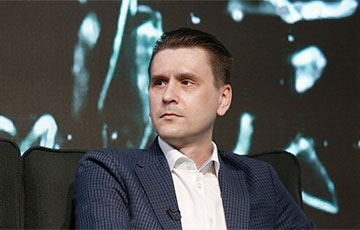Ukrainian Military Expert Explains What PMC Wagner Does In Belarus
7- 30.01.2023, 16:56
- 31,296

Oleksandr Kovalenko divided Wagner fighters into four groups.
The Russian Wagner private military company should be divided into four groups, Ukrainian military expert Oleksandr Kovalenko wrote for the site.ua.
The first group is the most professional, consisting of mercenaries with combat experience. However, it is now located not in Ukraine and not even in Russia, but in other countries, where the Kremlin has its interests.
The largest group of PMC Wagner is located in the Central African Republic and Libya. I would like to point out that the Wagner African group has remained virtually unchanged since the start of the war in Ukraine in 2022, only decreasing by 10% at the very beginning of the invasion.
There are two reasons for this. Firstly, a lot of mercenaries simply did not want to go to fight in Ukraine. They are much safer in Africa than they are now in Ukraine, and they cannot be forced to leave the bridgehead that is important to Moscow.
Secondly, it is important for Russia to keep a significant and combat-ready contingent in Africa.
There are more than 2,000 Russian mercenaries in the Central African Republic supporting Fosten-Arkange Touadera. That's about three battalion-tactical groups made up of really good quality resources.
Libya has roughly the same grouping. The Russians are compactly deployed at Al-Jufrah airbase in the central part of the country, as well as at Al-Qardabiya airbase in Sirte and in the port district of the city. Representatives of the PMC Wagner also provide air cover to these areas with MiG-29s.
There are also Wagner fighters in Mali, Sudan, Mozambique, Angola, Zimbabwe, Guinea-Bissau, Guinea and Madagascar, but in number of up to one battalion-tactical group. There are also reports of the appearance of Wagner fighters in Eritrea. In total, there are up to 10,000 Russian mercenaries in Africa.
The second grouping of the PMC Wagner represents the professional backbone, which is still in Russia. They are not used as live fodder, but are kept within the second line in the war zone, or used as instructors in training camps in Russia, as well as in Belarus.
In Belarus, at least 150 Wagener fighters conduct training of potential mercenaries from among citizens of Belarus, as well as partially participate in the training process of soldiers from the former 2nd Motorized Rifle Division, 1st Tank Army, and now the 6th MRD, 3rd TA.
The third group are cons. The very meat that is used in Ukraine in the "slaughter" mode. They are not even Wagner gighters in the full sense of the word, because these combat units have only one task - to die and occupy positions with their corpses, to score coordinates on the map. No more, no less.
Therefore, if anyone is talking about writing off the PMC Wagner, he must understand that today this terrorist group in Ukraine has indeed lost its potential. In turn, it continues to pose a high threat outside Russia, in Africa. and even Europe.
Even before the invasion of Ukraine 2022 and before 2014, the PMC Wagner was formed as a military branch for hybrid operations outside of Russia under the auspices of the FSB. Then the FSB tried to take a bite out of the Defense Ministry budget allocated for military hybrid operations in other countries.
One of the Wagner training camps was Partizan in St. Petersburg. This camp was supervised by the Russian Imperial Movement, a nationalist group that dreams of reviving the Russian Empire. In 2020, it was recognised in the US as a terrorist organisation.
The most interesting thing is that representatives of Russian neo-Nazi groups were initially trained in this camp. And not only Russian. Representatives of various radical, right-wing and neo-Nazi groups from Europe passed through the Partisan.
For example, neo-Nazis from Germany (Der Dritte Weg and Young Nationalists), Sweden, France and Serbia were all trained in this camp. Later, many of them ended up in the Wagner PMC and even took part in battles in Donbass against the Ukrainian Armed Forces.
In July 2017, the Gothenburg district court found three Swedish citizens - Viktor Melin, Jimmy Jonasson and Anton Tulin - guilty of organizing a series of bombings at the offices of left-wing activists. According to the investigation, they had also undergone training courses at Partisan.
As part of the investigation, the Swedish State Security Service (SSS) prepared a confidential report, which, as it became known at the trial, alleged that the defendants had undergone military training at the Partisan training camp in August 2016.
The PMC Wagner is also dangerous because it maintains contacts with many radical groups around the world. Some members of these groups had combat experience in the Donbass, after which they returned to their countries without breaking ties with the PMC Wagner.
The danger of these contacts is that they could be used by Russia to destabilise other countries from within. For example, as was the case in France during the Yellow Waistcoats protests or in Sweden.
And this group, I think, could well be included in the fourth category.









